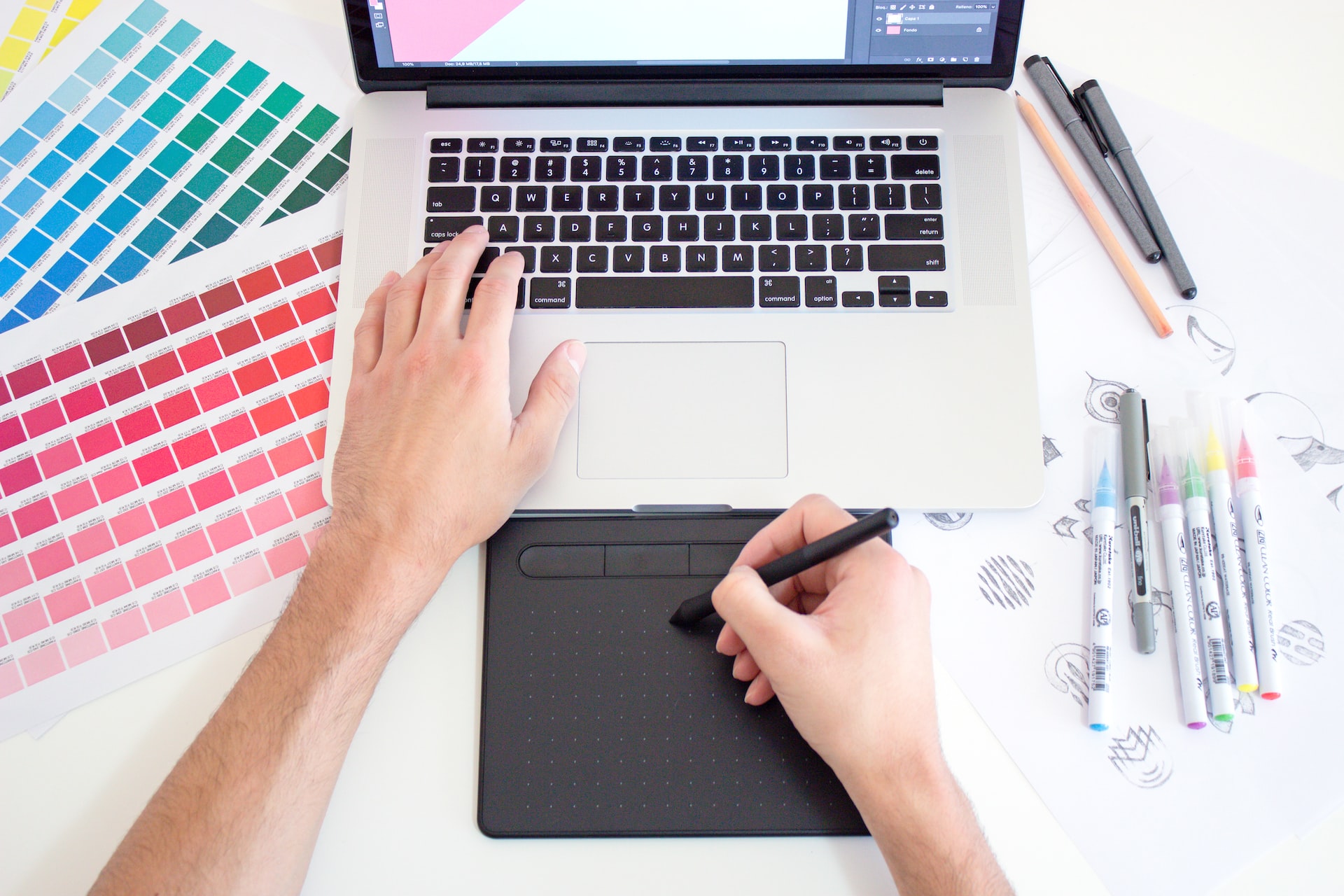
20 Sep How to Design for Print vs. Web
To run a successful business, you need a strong website and engaging marketing materials. But even though both web and print designs are created using a computer, there are some major factors to consider when designing for web vs. print. Sometimes colors and resolutions that look great on a screen will look drastically different on paper. Let’s take a look at the elements that can impact web and print design.
What’s the Difference Between Print and Web Design?
Print design refers to any type of graphic that is meant to be printed, such as brochures, business cards, posters, banners, billboards, etc. Print design takes the weights and texture of the finished product into consideration, not just the visual design.
A digital web design, on the other hand, is meant to be displayed online and viewed on computers or mobile devices. Web design encompasses more than just the look of a website or ad, it also includes elements like navigation, usability, and accessibility.
What to Consider When Designing for Print vs. Web
User Experience
Although digital and print are both visual mediums, they each engage users in different ways. For example, creating a good user experience for a website includes ensuring that it’s easy to navigate, easy to read, informative, and engaging.
When it comes to print design, a user experience focuses more on the look and feel of the materials. For example, a business card printed on thick card stock in a sleek font looks much more professional to potential clients or investors than a flimsy card that’s hard to read.
When designing for print, you can design for specific finishes (matte, glossy, etc.) and textures to create a more engaging experience. You also need to consider navigation—materials like catalogs and brochures should lay out information in a way that is simple and logical to follow, just like a web page.
Resolution
It’s important to understand how to choose the best resolution images for web and print designs. Whether for web design or print, creating high resolution designs on a computer has to do with the number of pixels per inch (PPI). If you want to add high quality images to your website, you’ll need to use at least 72 to 120 PPI. But for high quality images in printing, at least 300 PPI is best.
However, the size and viewing distance of your print also comes into play with image resolution. For instance, a large format print with a close viewing distance, like an object wrap, only needs 100 PPI to still look sharp. Large format prints like banners that have a longer viewing distance will still have a high quality appearance at an even lower resolution.
Color Mode
The color of a print can look significantly different from the color on your screen because electronic devices and printers use different color modes. Printers use cyan, magenta, yellow, and black (CMYK) to produce colors, while screens use red, green, and blue (RGB).
When designing for print it’s important to use the Pantone Color Matching System. Choosing the right Pantone color based on your print material will help your printed product turn out exactly as you envisioned. Using Pantone colors will also ensure that the colors in your print materials accurately match the colors on your website for consistent branding.
Bleed
Bleed is the margin of space that stretches beyond your design’s trim line. In web design, bleed doesn’t matter because no pages or edges are physically being cut. But when designing for print, including a bleed in the layout is absolutely essential!
Without a bleed, if the cut is off by even a fraction, you’ll end up with a white margin around one or more sides of your design. Colors and images that you want to go all the way to the edges of your print should extend into the bleed margin. Incorporating a bleed into your design will prevent issues with your print that may turn away potential customers from your business.
Printing Your Designs in Tempe, Arizona
Knowing which factors to consider when designing for print vs. web will allow you to make the most of both your digital and print marketing efforts and avoid critical mistakes. If you have a project that’s intended for printing, Mousegraphics in Tempe can help you bring your print designs to life.
We offer a wide range of print products and services for local businesses and we’re happy to answer any questions you have about making your designs print-ready. Working together, we can ensure that the finished product reflects your vision. Give us a call at (480) 470-7438 today to discuss your next project.
Images used under creative commons license – commercial use (9/20/2022). Photo by Theme Photos on Unsplash



